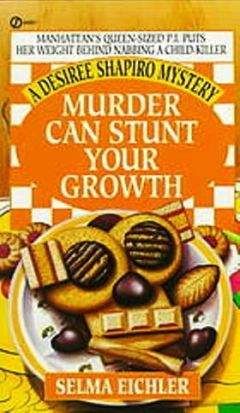Steve Andreas - Help with Negative Self–talk Volume I

Помощь проекту
Help with Negative Self–talk Volume I читать книгу онлайн
NLP has a coherent set of ideas or understandings that can be used to understand the wide–ranging applications of the technology.
Modalities
One basic understanding in NLP is that all our experience consists of either sensory–based experience in the moment, or internal representations of sensory–based experience that are remembered from the past or forecast into the future. We can't know the world directly, only through the representations of the world that we build out of what we receive through our senses. These representations will always include one or more of the following five sense modalities: visual images, auditory sounds, kinesthetic feelings, olfactory smells, and gustatory tastes. While the last two modalities are very important in food selection, cooking, and certain other contexts like personal hygiene or perfume manufacturing, most of our thinking and responding is some combination of the three major sense modalities, visual, auditory, and kinesthetic.
These sensory modalities are the building blocks, or the "atoms," of all our experience. Even our most abstract words and conceptualizations are composed of some combination of images, sounds or feelings. These different modalities can be combined simultaneously in a moment in time, or they can be combined in a sequence, rather like a linear computer program, in which, for instance, an image of a singer is followed by the song that they are singing, followed by our feelings in response to those sounds. We can learn how to voluntarily rearrange these "atoms" of experience in order to resolve problems, and reach the outcomes that we want. Let's examine one practical application of this methodology, learning how to spell.
Applying the Methodology of Modalities to Technology
Spelling is a simple rote memory task in which the outcome is to be able to access a correct sequence of letters in response to the sound of a word (or in response to an image of what a word indicates). Once that is done, the word can be
written out, or the sequence of letters can be spoken, as in a spelling bee. A poor speller will typically use one of two methods that do not work well:
a) Creative Speller will try to construct a visual image of the word to be spelled, using creative visual imagery, instead of using remembered imagery to visualize the word exactly as they have seen it in the past. Most right–handed people look up to their left to access the right hemisphere of their brain for visual memory, and look up to their right to access the left hemisphere of their brain for creative visualization. Creativity is a wonderful ability to rearrange experience and develop new possibilities, but it is not appropriate for spelling, because spelling is a rote memory task that requires not being creative.
b) Some people will try to sound out a word auditorily, in order to elicit the letters in response to the sounds in a word. In English this is impossible for about 40% of words, because our very strange spelling makes it very difficult to reliably sound them out. Despite this, many schools attempt to teach children how to spell by sounding out words auditorily, a method called "phonetics," a word which ironically can't be spelled phonetically!
Phonetics works well for reading, which requires going from the written word to the spoken word. But that is a different task than spelling, in which you have to do the reverse, and go from the spoken word to the written word. In Spanish, all words are written exactly the way they sound, so spelling auditorily works well, and is not a problem in school — it is almost impossible to find a bad speller in a Spanish–speaking country.
Accurate Spelling. The technology of teaching children how to spell well is ridiculously easy. You simply tell the child to look at the word written on the blackboard, and then to close their eyes and look up to their left to see an internal remembered image of the word, and then notice a feeling of familiarity that lets the child know that they have seen that word before. Then they only have to copy their internal image of the word onto the paper, or read out the letters if they are in a spelling bee. Even in Spanish this is more effective than sounding out the letters, because it is much faster to get a visual image of a word than it is to listen to the sequence of sounds. For more about the NLP spelling strategy and how to learn or teach it, read (1, ch. 2).
Submodalities
A further development of NLP methodology is the realization that each of the primary sensory modalities can be subdivided into smaller parameters or elements, called submodalities, each of which can also be changed to alter our experience. If modalities are the "atoms" of our experience, submodalities are the "subatomic particles" of experience that make the atoms of experience have significantly different properties.
A visual image can vary in distance from the observer, location in space, and size. It can be flat (2–D) or 3–D (holographic), framed or panoramic, bright or dim, moving or still, color or black and white. You can be inside a memory as if an event were happening again, or you can see it as if you are an outside observer watching someone else experience that event; the same is true of your images of the future — you can be in them, or you can see yourself in them. A visual memory that is a large, close, 3–D, color panoramic movie will be much more impactful than one that is a small, distant, two–dimensional framed black and white still photograph. You can easily confirm this in your own experience by representing the same memory in those two different ways.
An auditory sound can also vary in distance from the listener, location in physical space, and loudness. It can be monaural or stereo, vary widely in tempo, tone, timbre and frequency range, and you can hear it by being inside that panoramic experience again, or being outside it, as if you were hearing it coming from a tape recorder or CD player. A sound that is loud, close, full, and panoramic will be much more impactful than one that is faint, distant, and coming from a point source. Again you can easily verify this in your experience by recalling a piece of music in both ways, and notice the difference.
A kinesthetic feeling can vary in intensity, duration and location. It can vary in temperature, pressure, texture, and extent. It can be still or moving — spreading from one location to another. It can be a surface tactile feeling or an inner emotional feeling. A remembered feeling that is intense, moving, and involving the whole body will be much more impactful than one that is weak, still, and involves only a very small part of your body. Again you can try this out in your own experience to verify that it is true by remembering the same feeling in both ways.
Modalities offer three alternative ways to represent experience, offering choice. Submodalities offer hundreds of different alternatives, which can be combined in various ways to create hundreds of thousands of alternatives, for even more choice. Let's examine a few practical applications of this methodology.
Applying the Methodology of Submodalities to Technology
Overwhelm When we are not happy about something in our life, and conclude that we "have a problem," often a major aspect of what is happening is overwhelm or confusion resulting from information overload. There is too much information, or it is coming too fast, for us to process it well. Imagine trying to pay attention to six people talking to you at once, and you will have a taste of one kind of overwhelm, but for some people it is even worse. Often someone may have a half–dozen movies playing in their minds simultaneously — large, close, and in bright color and loud sound. This is also true of some people who suffer from ADHD and other learning difficulties. With all those movies happening at once, it
is impossible to process it all, and that makes it very hard to notice what is happening around you, or to accomplish anything.
It is relatively easy to learn to focus on just one of those internal movies at a time, allowing the others to recede into the distance and become smaller, dimmer, black and white, and quieter. When there is only one movie to attend to in the foreground, you can more easily process that information, and then allow it to recede into the distance, so that a different movie can become foreground and be processed in turn.
Phobia/abuse Someone who has a phobia — or any other trauma, abuse, PTSD flashback, etc. — remembers a terrible experience by being inside it, as if they were experiencing it all over again. As a result, they have all the awful feelings that they had in the original experience. Others who have had equally horrible experiences can recall them comfortably because they see them as an observer watching a movie on a movie screen, as if it were happening to someone else. Since they are outside the experience, they don't have any of the feelings of being inside it. Either they feel neutral, or they have the feelings that a compassionate observer might have. It is easy to teach someone with a phobia to take their memories of a terrible event and project them onto a movie screen, so that they can respond to them neutrally. (1,ch. 7)
Grief The structure of grief is exactly the reverse of a phobia or trauma. In a phobia, someone remembers a horrible experience by being inside it, so they have all the awful feelings again. In grief, someone remembers a wonderful experience by being outside it, so they can't feel the treasured feelings that they previously had with the dead person, leaving them with only an empty feeling. Since the structure of grief is the reverse of a phobia, the resolution for grief is also the reverse — to remember being with the dead person by being inside their special memories of them, so that they can easily re–experience all the good feelings that they once had with them. (1,ch. 11)
Epistemology
3. The epistemology of NLP is fundamentally the same as that of physics, and all of science. We discover what is true through experimentation and testing, and this is a process that may pause, but never stops, and is continually used to expand, revise, and enrich the field. Every pattern or method in NLP includes ways to test whether each step has been successful or not, using nonverbal response as the primary feedback, along with verbal report.
However, most of NLP has only been tested "clinically" in the experience of those who have made changes in their lives. This is also true of most psychology and medical practice. It has not yet been rigorously tested in controlled experiments, and the same is true for the majority of other therapeutic and even medical interventions.
NLP has been developed outside academia, where most research takes place, and those who are most active in the field have been busy developing the methodology, discovering new ways to help people make changes. The kind of rigorous research that would validate NLP takes a great deal of time, money, and subjects, and it simply has not yet been done. However, many of the patterns in NLP could be tested far more easily than other psychological approaches, because each step of each process specifies both the intervention to be made, and how to evaluate whether or not that step has been successful. In addition, most NLP patterns achieve outcomes dependably, often in a session or two, which would greatly shorten the process of testing and follow–up.
Even though NLP is in its infancy — only some 35 years old — it already includes a wide range of practical processes, as well as a consistent and coherent methodology that underlies the specific methods. These broader understandings provide a framework for developing new methods and evaluating them. This methodology can also be used to understand methods that have been developed by other people intuitively, or out of a different orientation, to discover how they work, and how to improve them.
I have been teaching NLP processes at national psychotherapy conferences for many years, and observing as many other presenters as I can, especially when they are willing to actually demonstrate what they do. In almost all cases, what I can do with NLP is vastly superior, and much faster and more thorough than other approaches. As the field continues to develop and differentiate, we are able to do much more every year.
About the Author
Steve Andreas was introduced to NLP in 1977, and was one of the first small group of people to be certified by the original co–developers, Richard Bandler and John Grinder as NLP practitioner, master practitioner, and trainer in 1979, along with his partner, Connirae. He and Connirae co–edited four of the early classic Bandler/Grinder books, Frogs into Princes, Trance–formations, Reframing, and Using Your Brain — for a CHANGE. Steve and Connirae together wrote Heart of the Mind, and Change Your Mind — and Keep the Change. Steve has also written Virginia Satir: the patterns of her magic, modeling how Satir used NLP principles in her work with families, and Transforming Your Self: becoming who you want to be, modeling the structure of self–concept and how to change it quickly and easily.
His most recent two–volume book, Six Blind Elephants: understanding ourselves and each other, again demonstrates that he continues to be one of the foremost thinkers advancing the development of the field. This book presents a "unified field theory" of NLP and personal change, based on the well–researched field of cognitive linguistics. This book shows how all the different methods of change work — whether described as NLP or not — can be understood as resulting from changing one or more of three fundamental process variables:
a) The scope of sensory–based experience that we attend to,
b) The way we categorize that scope of experience, and
c) The logical level of the categorization.
In addition to his books, Steve has published numerous articles on NLP–related topics in various publications including the Psychotherapy Networker, (formerly the Family Therapy Networker) and the Milton H. Erickson Foundation Newsletter.























